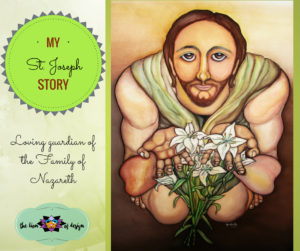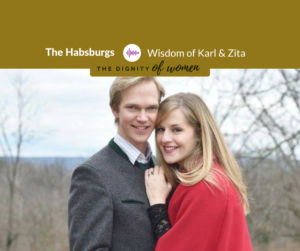I have reflected quite a bit on the movie Cabrini, by Angel Studies, since watching it in theaters. I have also determined, after many edits, to make this an article primarily about Saint Frances Cabrini herself, and not a critique of the art of the film. Simply stated, the quality of the movie’s production and caliber of acting is what all critics of Christian movies have been hoping for. Scene transitions were flawless, plot was evident, and there was a course of growth for several characters as well as constant conflict, perseverance, and an overall outcome that was resoundingly positive. The source of my hollow reaction rests on the emphasis of self-reliance and the overarching toxic patriarchy portrayed, which I found contrary to the life and experience of the saint.
However, the true beauty of any historical fiction is to give the viewer a glimpse of the real person and to deposit a growing interest that will lead each on their own relational journey with the magnanimous character. For me, being a researcher by nature, the movie was one of many seeds that made me want to invest the time to truly know the real Cabrini. You see, a few years ago, a very generous woman sent me a letter with a relic of Cabrini, stating that she believed that I needed her close intercession due to the nature of my work and research. At the time, I knew nothing about the Italian-born saint. Subsequently, my daughter’s class chose Cabrini as their patroness for the year and she began coming home weekly with Cabrini facts. Finally, word of a motion picture of the saint started to spread. All the while, the relic remained in a prominent place on our mantle.
Naturally, I concluded that the time was right for me to research and draw near to this saint who had been drawing so near to me. Not disappointed by her life of holiness and her legacy, I found that much lay beneath the surface of this barely five-foot-tall woman. Frances Xavier Cabrini was canonized as the first United States citizen to receive the honor in 1946. Truly a testament to a woman with a strong spirit, Cabrini slowly proved herself in her Northern Italian home. Rejected by a religious order because of her frail health, she began to teach and did so with such ardor and love that the local priest took notice and brought her name and talents to the bishop of Piacenza. The bishop invited her to become administrator of an orphanage in Codogno that needed strong leadership and organization. Cabrini accepted and joined the Sisters of Providence who were running it. There she endured six years of harsh treatment by her superior, all the time drawing nearer to Jesus. By 1880 the house was dissolved and Cabrini was asked by Bishop Domenico Maria Gelmini of Lodi to form a new order. She formed The Missionary Sisters of the Sacred Heart of Jesus out of her coinciding devotion.
Another bishop and a fellow saint, Saint Giovanni Scalabrini, had become deeply concerned about the horrific situation of Italian immigrants in New York. He knew her desire lie in mission work in the East, but could think of only one woman to help relieve the suffering in New York. Therefore, in 1887 he approached Cabrini and encouraged her to consider taking her missionary heart to America. After deep prayer, she met with Pope Leo XIII for advice. He agreed, saying to go “Not to the East, but to the West” and so with six Sisters she set off for New York in 1889. In her words, “The Heart of Jesus does things in such a hurry that I can barely keep up with him.”
It’s true that Archbishop Corrigan of NY was not initially supportive. Believing that Mother Cabrini would no longer come after having sent a letter to Rome dissuading her, no arrangement was made for anyone to meet the Sisters when they arrived, causing them to spend the first night in the Italian ghetto. Many such obstacles occurred. However, it is supremely important to understand that while Mother Cabrini displayed tenacity and exemplified the strength of the feminine spirit in overcoming unfavorable situations that stood in her way, she relied on nothing so much as she did on God. Cabrini’s deep focus was always in serving Jesus in whatever he asked of her. She said, “The Heart of Jesus will never allow himself to be outdone. Run towards him and don’t allow any difficulty to come between you, but always approach him with great simplicity.” This faith led to a transformation of life and spirit among the sub-human conditions of the immigrants of Five Points, NY, where Cabrini’s convent became a haven. Catechism classes and schooling turned into an orphanage, parochial schools and a hospital. That same faith that she hoped would allow her to embrace the world as a gift to God enabled her to raise large sums of money for the establishment of countless orphanages, schools and hospitals all over the world, not to mention the miraculous events of knowing the location of water on two barren properties. “Show me the way and I will do everything with your help!” Cabrini said.
What made Saint Frances Xavier Cabrini so great was not how much she accomplished, but how she allowed God to accomplish these things through her. This is the triumph of every Christian soul realized in the saint, to overcome ourselves and let God have the victory in ways we never could. This was the way of Mother Cabrini. Her story goes beyond humanitarian triumph to the recognition of the dignity of every human soul stamped with the image of the Creator. St. John Paul II stated of those she served that, “Her motherly heart, which gave her no peace, reached out to them everywhere: in hovels, prisons and mines. Never intimidated by toil or distance.” God made her a mother and all in need became her children through Him.
It was through her willing spirit that God moved mountains. Countless Catholics and non-Catholics willingly aided Cabrini and made a path forward for her. I was particularly fascinated by the story of Cabrini receiving a letter while in Rome, at the same time discerning a new home for her orphans, which came from the provincial of The Society of Jesus in NY. He wanted to sell her the Jesuit novitiate house overlooking the Hudson after hearing favorable accounts of her mission from two of his priests. The property had no water but Cabrini was not deterred by this fact and in 1890 the orphanage relocated. It is said that Mother Cabrini walked the property and pointed to a spot in which to dig the well and unfathomable to reason, water was in fact abundant thereafter, supporting the Sisters and 200 girls housed on the property. A similar occurrence happened on her property in Golden, Colorado, which also had no water. Cabrini ordered a large rock to be moved and the spring which bubbled up remains to this day, attracting many pilgrims.
Her life, exemplifying heroic virtues of faith, hope and charity was also marked by deep prayer and conformity to God’s will. On the 150th anniversary of her birth, Saint John Paul II wrote to her Sisters, “[Cabrini’s] extraordinary activity…drew its strength from prayer, especially from long periods before the tabernacle. Christ was everything to her. Her constant concern was to discern his will in the directives of the Church’s Magisterium and in the events of life themselves.” Granted citizenship in 1909, just eight years before her death in 1917, the frail Cabrini, now Patroness of immigrants, accomplished more than her greatest supporters in her home country ever imagined.
“Where did she acquire all that strength and the inexhaustible energy by which she was able to perform to many good works and to surmount so many difficulties? She accomplished all this through the faith that was always so vibrant in her heart; through the divine love that burned within her; and, finally, through the constant prayer by which she was so closely united to God…She never let anything turn her aside from striving to please God and to work for his glory for which nothing, aided by grace, seemed too difficult or beyond human strength.”
-Pius XII, Cabrini canonization in 1946
My St. Joseph Story
Blessed Karl and Zita
Kimberly Cook
Writer, Podcaster, Mother, & Catholic Apologist. Meet Kimberly





